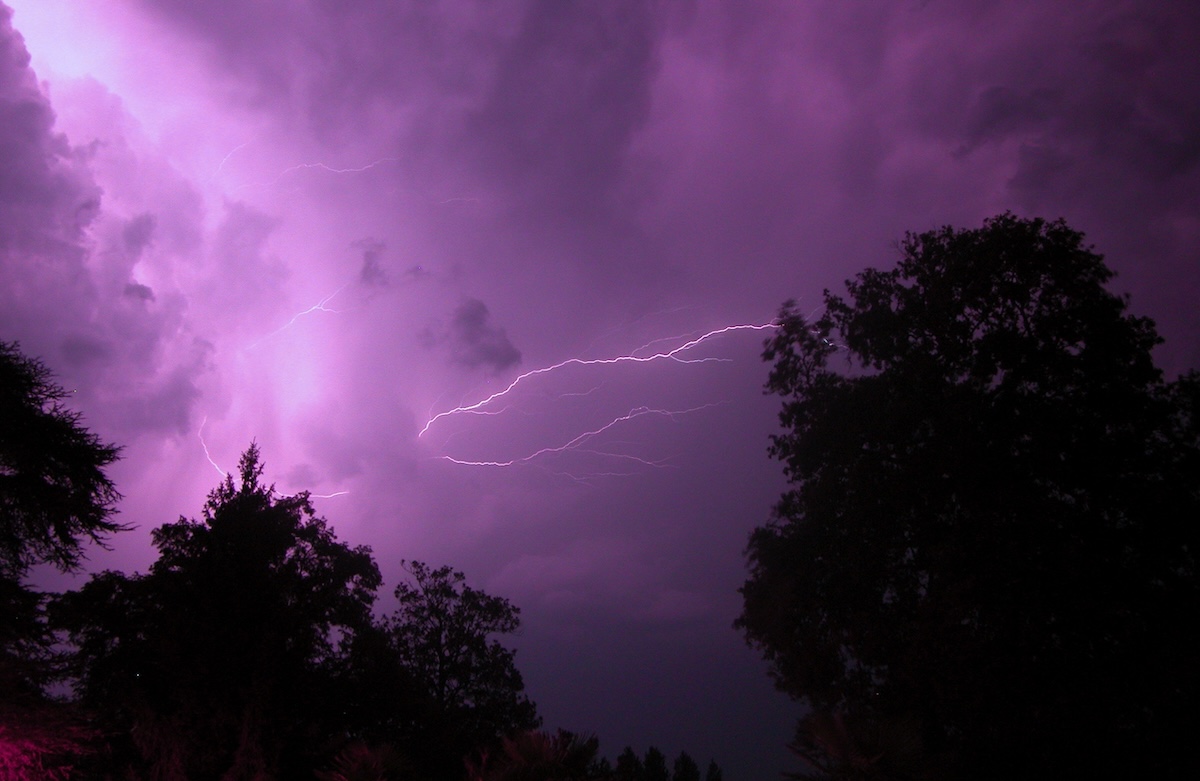How to Protect Your Trees From Monsoon Damage
Every summer, Phoenix residents await the dramatic winds, lightning, and heavy rains of monsoon season. While these storms bring much-needed relief from desert heat and drought stress, they can also wreak havoc on landscapes — especially trees.
Fallen branches, uprooted trunks, and damaged root systems are common after monsoon storms, and the cost of removal or replacement can be significant. Fortunately, with the right preparation, you can protect your trees and your property before the storms hit.
Why Desert Trees are vulnerable during monsoon season
Arizona’s desert trees are strong, but even the toughest species can suffer storm damage. The combination of high winds, saturated soil, and top-heavy canopies makes trees particularly at risk.
- Shallow Roots: Many desert-adapted trees grow wide, shallow root systems, making them vulnerable to tipping in saturated soil.
- Overgrown canopies: Thick, unpruned canopies catch wind, acting like a sail and increasing the risk of snapping or uprooting.
- Weak branch structure: Fast-growing trees often have weaker wood, leading to breakage under pressure.
- Heat stress before storms: Stressed trees are less resilient, making them more susceptible to storm damage.
These risks affect many of the trees in the Valley, as you’ve probably seen after a heavy storm. However, with proper, proactive tree care, you can protect your trees, regardless of the type.
Best practices for protecting trees before monsoon season
Strategic Pruning
Proper pruning is often stated as one of the simplest ways to reduce the risk of storm damage to your trees. However, this not always the case and requires skilled, professional tree trimming.
The alternative solution to strengthen and protect trees is application of plant growth regulators (PGRs), which reduce overgrowth as well as the need for risky pruning, all while making the tree stronger and more resilient. Because the growth is regulated, the trees will redirect energy, becoming more robust and prepared for storm season. PGRs can last for 2 years or more, which also helps to reduce tree trimming costs.
- Stronger canopies with plant growth regulation
- Remove weak or dead branches that could easily snap.
- Raise low branches to improve structure and balance.
- Avoid over-pruning, which stresses trees and makes them vulnerable.
Strengthening Root Systems
Healthy roots anchor trees against high winds. There are a number of elements that contribute to a strong root system including:
- Deep, infrequent watering encourages roots to grow downward instead of staying shallow.
- Soil aeration improves oxygen flow and strength.
- Proper mulching helps regulate soil moisture and temperature.
Fertilization for resilience
Nutrient-deficient trees are weaker and more likely to fail under stress. This can often be hard to spot without the help of a professional arborist, but following best practices when fertilizing can keep trees stronger.
- Apply balanced fertilizers to support strong growth.
- Consider micronutrient treatments for the alkaline soils in Phoenix, which often lack iron, zinc and manganese.
- Schedule fertilization before summer storms to ensure that trees have the resources they need when monsoon season rolls around.
Choosing the right trees for the desert
If you are planting new trees, species selection matters. Some trees withstand monsoon storms better than others.
- Good Choices: Palo Verde, Desert Willow, Ironwood and Mesquite.
- Riskier Choices: Fast-growing species with brittle wood such as Eucalyptus.
Professional Inspections
Not all risks are visible to the untrained eye. If you are in the Phoenix metro area, Adaptive Plant Health & Weed Solutions offers free plant health evaluations and can help you prepare for monsoon season. A certified arborist can help by:
- Identifying structural weaknesses.
- Spotting pest or disease problems that weaken trees.
- Recommending pruning, cabling, or bracing if needed.
- Testing and diagnosing soil and root health.
Having trees inspected in advance of the summer monsoon season can give you peace of mind and ensure that your landscape has the resilience it needs.
What to do after a monsoon
Even with proactive preparation, trees can still sustain damage. Here are some tips on how to respond safely and keep your trees at full health.
- Inspect trees carefully: Look for broken branches, leaning trunks or exposed roots.
- Stay clear of power lines: Never attempt to remove limbs that are near electrical wires.
- Call professionals for major damage: Tree removal or heavy limb cleanup requires proper equipment and expertise.
- Schedule follow-up care: Fertilization, pest control and pruning can help stressed trees recover more quickly.
- Assess the situation before removing a tree: Damaged trees can often appear like a lost cause. However, before making a decision to have a tree removed, consult an arborist to determine if the tree can be treated.
summary
Monsoon storms are an inevitable part of life in Phoenix. But storm damage doesn’t have to be.
With proactive care — including pruning, fertilization, irrigation management, and professional inspections — you can protect your trees, your property, and your investment.
Healthy trees aren’t just about beauty. They’re about safety, comfort, and long-term value for your home.
If you are in need of a free landscape evaluation or help with tree care, fertilization or growth regulation, contact Adaptive Plant Health & Weed Solutions or call (602) 777-7764

